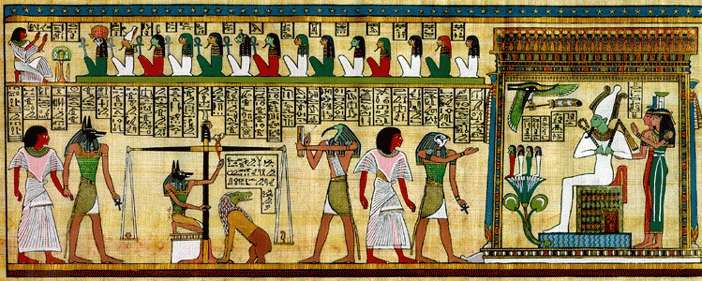Did you know that the afterlife is a place of happiness? When a pharaoh died, the ancient Egyptians believed that death was not the end, but the beginning. You will be reading about the process of mummification, how they died, and the afterlife.
Welcome to Egypt
How they died
Many pharaohs died because of sickness diabetes, but they died with peace and happiness. Not many people know what caused the fatal sicknesses. When the pharaohs died, Egyptians believed that they will go to another world or afterlife. Scientist’s have been researching what caused the sicknesses and they have taken tests on the mummies, and till today they still haven’t found proof of how they died. This is why we are doing death, because death is a natural thing. Like Ivan said, death is not the end, but the beginning.
The Process of Mummification
Not many Egyptians could afford such luxury to be mummified, but lucky for us, we can see how it’s made.
First, the embalmers cut open into the side of the body, removing the liver, both lungs, and the intestines then put each of them in their own canopic jar. They removed the brain with a long hook, inserted through the nose, crushed the brain and scooped out. The Egyptians did this because they thought the brain was useless. They left the heart intact in the body because it was thought to be the seat of intelligence and life force.
Second, the body was washed with the water from the Nile River
Last was wrapping the body. A priest chanted from The Book of the Dead to ensure the mummy would safely arrive to the afterlife, while hundreds of yards of linen were used to wrap the body. Amulets made of precious gems and metals, shaped of gods, the eye of Horus, scarabs, and many more were tucked in between the layers around the whole body were also used for safety and good fortune. It took about 70 days to complete the process of preserving the mummy.
In the end, you have mummy jerky, wrapped and ready for eating! Just kidding, though, I would eat it. You have a mummy, ready for the land of paradise, and to be left alone for the next thousands of years.
The hall of Ma’at (or The Hall of Judgment)
When the pharaoh dies, he goes into “The Hall of Ma’at” The gods take out the pharaoh’s heart and weigh it with an ostrich feather. If the heart was heavier than the feather, then it means that the pharaoh did many cruel things in his life, and as punishment, the gods set loose a monster that had a face of an alligator, upper body of a lion, and the lower body of a hippopotamus. If the heart was lighter than the feather, then the pharaoh had a pure soul and was free to go to the afterlife.
Arriving to the Afterlife
Death was not beloved to be the last stage of life, but the stage in which a person was at rest for revivification.
Egyptians believed each person had a physical body and a “ka”, a life force that continued after death. The ka needed the same substances as the living, even in death, so food was mummified and went inside the tomb. Sometimes, the higher ranked Egyptians wanted their pets to join them in the afterlife, so the embalmers mummified them too.
The dead needed to rejoin its ka after death to regain life, but the physical body cannot go from the tomb to the underworld, so their “ba” or personality went instead. When the ba and ka reunited, they reanimated the “akh”. The akh was the soul to be effective in the afterlife. The reanimation was only possible if the proper funeral rites were used, followed by constant offerings.
After they reunited, the ba and ka turn to the sky and forever become a spirit Conclusion
In conclusion, mummification, death, and the afterlife were very interesting subjects to research. Now we know every body has separate cultures and different beliefs. The important thing is that it doesn’t matter what kind.
So, there you have it, a few of your questions, and we hope that this report fulfilled your thirst of Egyptian death. J






.jpg/140px-Tomb_of_Nakht_(2).jpg)